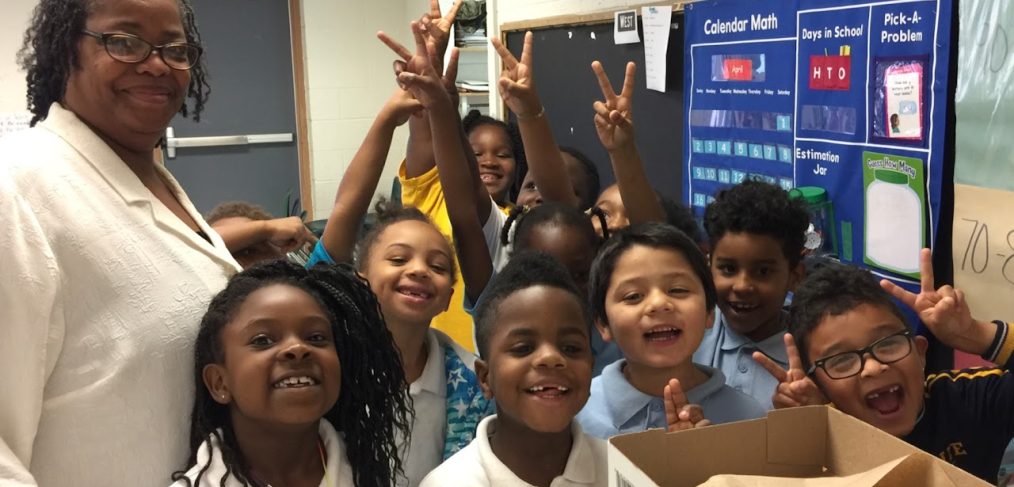
Teacher shines at National Association of Black School Educators Conference
Making sure that gifted and talented students not only have access to the program, but also have access to cutting-edge technology is something that Nahsechay Dipo, a Gifted and Talented program teacher at Julian T. Saldivar Elementary School, feels passionate about. She says that GT students need to be in an environment that not only challenges them, but maximizes their talents.
She plays several roles in her campus, including being a DTR Ambassador, Student Choice advisor, student activities coach for chess and Destination Imagination, GT teacher mentor for two campuses, and a TEI Exemplary teacher.
Dipo has taken her work and research in the GT field to a national level. She was selected to present at the National Association of Black School Educators (NABSE) in New Orleans, which took place on Nov. 29 through Dec. 3 this past year. Her workshop was on the topic of “Rethinking Gifted Education: Cutting-Edge Technology for Enhanced Learning Acceleration.
Dipo said she created a portal on the provision of services for gifted students and the inclusion of disruptive technologies such as artificial intelligence, virtual reality, mixed reality and augmented reality in the development and delivery of a curriculum that is futuristic and prepares students for the workplace–ensuring that gifted programs are implemented with fidelity to properly prepare students for the workforce.
In fact, she is currently writing her doctoral dissertation on the use of cutting-edge technologies in the classroom to help to show growth with students.
Now in her 12th year of teaching for the district, Dipo believes that the things that students can create are endless. One of the benefits of a gifted and talented program is that it provides that platform for you to be diverse in the projects with the children, according to Dipo.
“I like them to discover who they are,” she said.
For example, in her first year teaching GT, students built functional wind turbines.
“I pushed them for that because that’s an industry that later they will be able to get work in,” Dipo said. “These were fifth-grade students who were struggling with their core classes, but they were given an opportunity to really show who they were and build the turbines.”
Her students have also built bridges, studied genetically modified organisms (GMO) before they were commonplace in the market, have designed and built websites with avatars, and other projects. She currently has approximately 103 students in her GT program.
Dipo says presenting at the NABSE conference has been a blessing, as she has received numerous responses and positive feedback from attendees, many of whom were superintendents and principals. They shared about how beneficial her workshop was. She also received an out-of-state request to come and observe her classroom.
One of the things that Dipo addressed in her presentation was about how disproportionate the provision of services are for children of color, throughout the country. Dipo says she thinks that’s part of why the government has instituted the Representation Index (RI), which is a survey that measures how children of color are being served. She says it’s a significant situation that needs to be addressed within the United States.
While Dipo says there’s still work to be done as far as equity in serving students of color, it’s a good thing the conversation is taking place nationwide.
Dipo has some words of advice for parents and educators to help push the needle forward. She says it’s important for parents to be made aware of their rights when their child has been identified–to understand that once their child is identified that they are entitled to services. With regard to schools, Dipo says that GT needs to be a priority and that everyone understands that these services are not optional, and shouldn’t be skipped or overlooked.
She says because her background is Special Education and GT, she has worked at both ends of the spectrum.
“Sometimes we see the disability but not the other ability of the child,” Dipo said. “And I think it’s the same thing with GT that we see a child who maybe has a behavior problem in the class. It’s not that the child is a behavioral problem, it’s that he’s not being challenged in a way that’s got him engaged with what’s going on in the classroom.”
“Because there is an interest in what they’re doing and the skills that are innate within them, it is allowed to be manifested in a project based environment,” Dipo said. To learn more about Dipo’s research, click here for a video or to visit her classroom website, click here.



